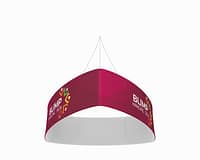In an era where user engagement is paramount, the traditional case presentation is evolving into a more dynamic and interactive format. The concept of “Case-to-Counter” design embodies this transformation, bridging the gap between static information and immersive experience. By harnessing the power of interactivity, professionals can enhance audience engagement, making complex data and scenarios more accessible and relatable. This article delves into the nuances of crafting compelling interactive case-to-counter formats that not only elevate presentations but also foster deeper connections with audiences.
Elevating Interactivity: The Art of Case-to-Counter Design
The art of case-to-counter design lies in the meticulous crafting of experiences that resonate with audiences on multiple levels. At its core, this approach invites participants into a narrative rather than simply presenting them with information. Designers must integrate elements like storytelling, visuals, and real-time feedback to create a compelling journey that captivates attention. By using the principles of design thinking, stakeholders can identify key user needs and motivations, ensuring that the content delivered is both relevant and engaging.
An effective case-to-counter setup also prioritizes the user interface and experience. Interactive elements such as sliders, clickable infographics, and multimedia presentations can transform passive viewers into active participants. These features not only enhance engagement but also encourage critical thinking and problem-solving, as users actively interact with the material instead of merely absorbing it. The strategic placement of these elements is crucial; they should feel organic and intuitive, guiding the user seamlessly through the narrative arc.
Furthermore, feedback loops are essential in this interactive design process. By incorporating mechanisms that allow audiences to provide input or express preferences, presenters can tailor the experience in real-time. This not only fosters a sense of ownership among participants but also allows for the adjustment of the presentation based on audience reactions. In essence, case-to-counter design becomes a two-way street, enriching the overall experience and making it more impactful.
Engaging Audiences: Strategies for Dynamic User Experience
To truly engage audiences, it is vital to move beyond conventional presentation techniques and embrace innovation. One effective strategy is the incorporation of gamification elements into the case-to-counter design. By introducing game-like features such as points, badges, or challenges, presenters can evoke a sense of competition and motivation among participants. This approach transforms learning into an enjoyable experience, encouraging users to delve deeper into the content while fostering a collaborative environment.
Another key strategy is the use of real-life scenarios and problem-solving exercises. By presenting relatable challenges, audiences can better connect with the material on a personal level. Case studies that mimic real-world situations allow participants to apply their knowledge and skills actively, promoting critical thinking and engagement. Coupled with interactive tools such as polling and Q&A sessions, presenters can create a dialogue that enriches understanding and encourages active participation.
Lastly, leveraging technology can significantly enhance user experience in case-to-counter designs. Integrating augmented reality (AR) or virtual reality (VR) can transport audiences into immersive environments, allowing them to interact with 3D models or simulations related to the case at hand. Moreover, the use of analytics to track engagement levels can provide invaluable insights into audience behavior, enabling presenters to refine their strategies continuously. By embracing these advanced techniques, professionals can craft interactive experiences that leave lasting impressions and foster meaningful connections.
In summary, transforming engagement through interactive case-to-counter design requires a blend of creativity, strategy, and technology. By prioritizing user interactivity, presenters can create compelling narratives that resonate with audiences and encourage active participation. As we navigate an increasingly complex and fast-paced information landscape, the importance of dynamic user experiences cannot be overstated. Embracing these innovative approaches not only enhances audience engagement but also ensures that knowledge is retained and understood, paving the way for more impactful communication in various professional realms.




